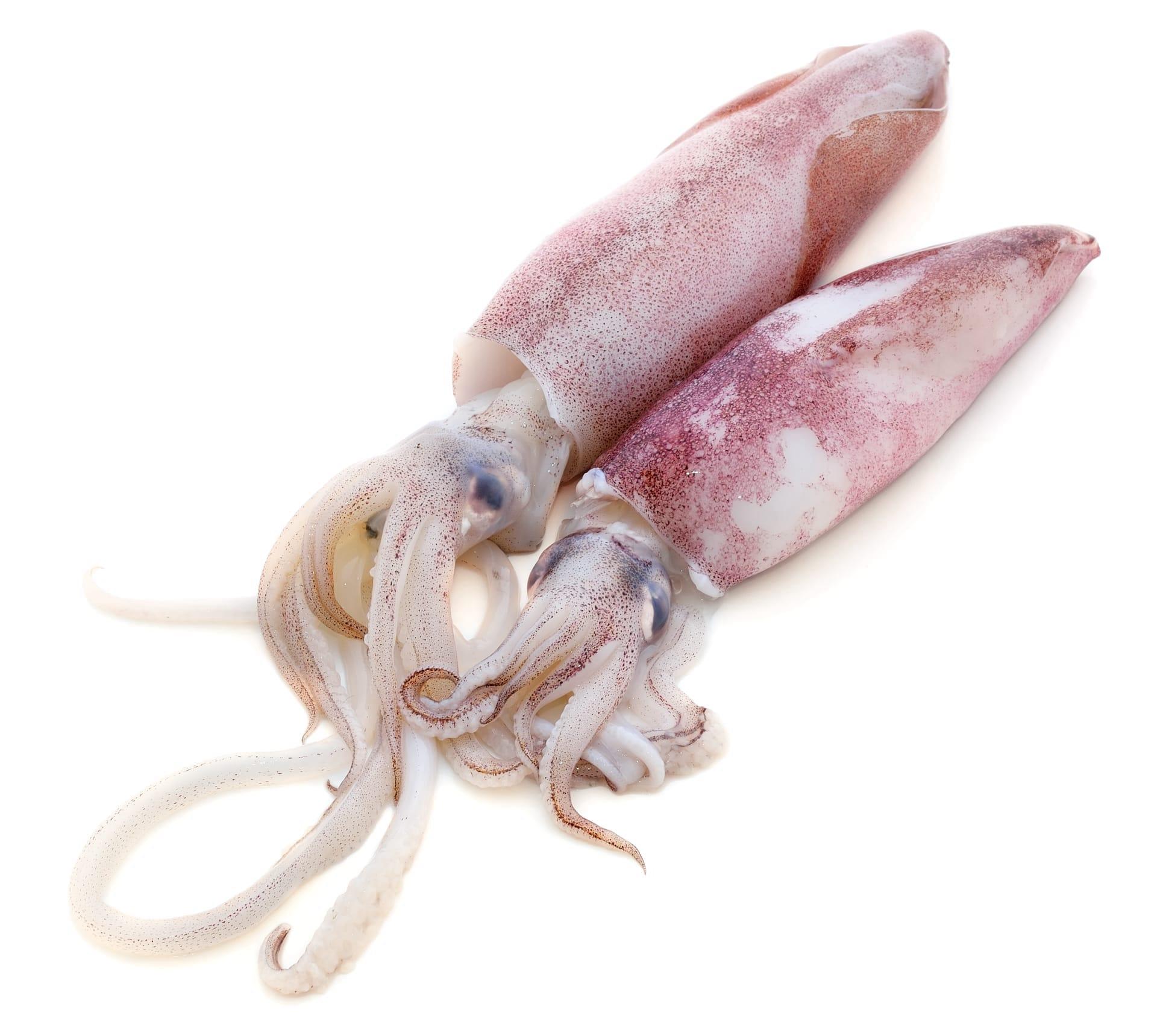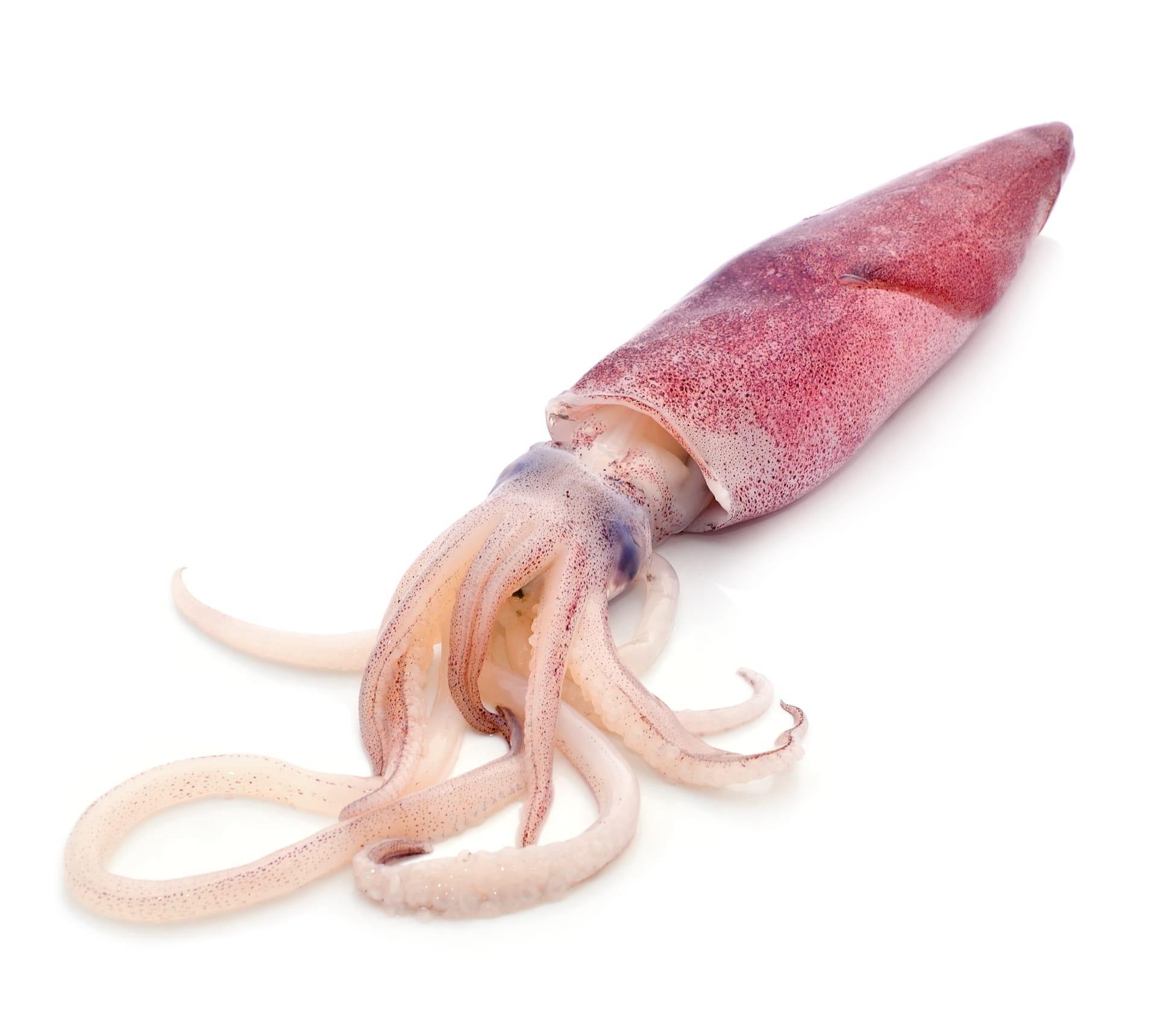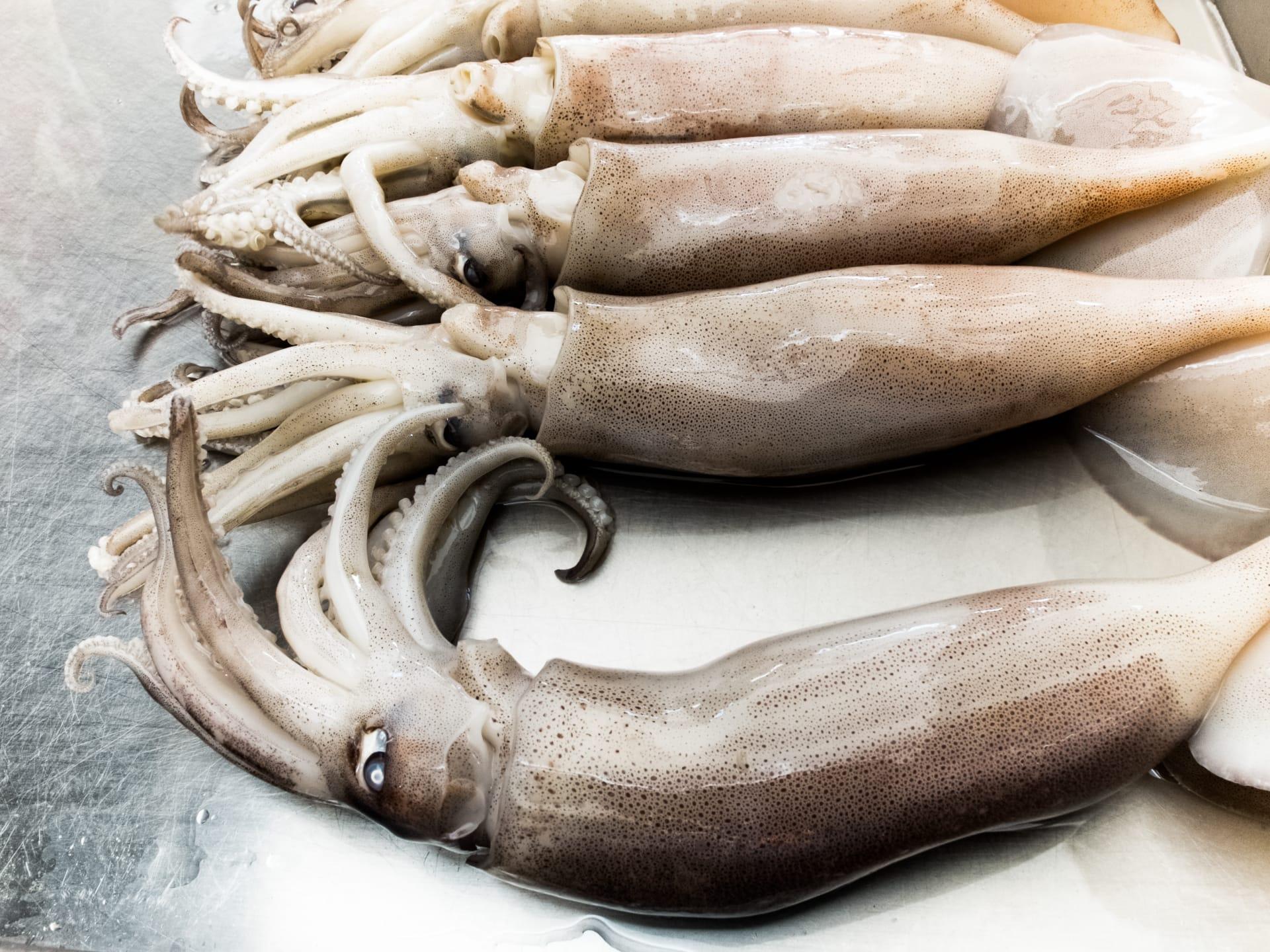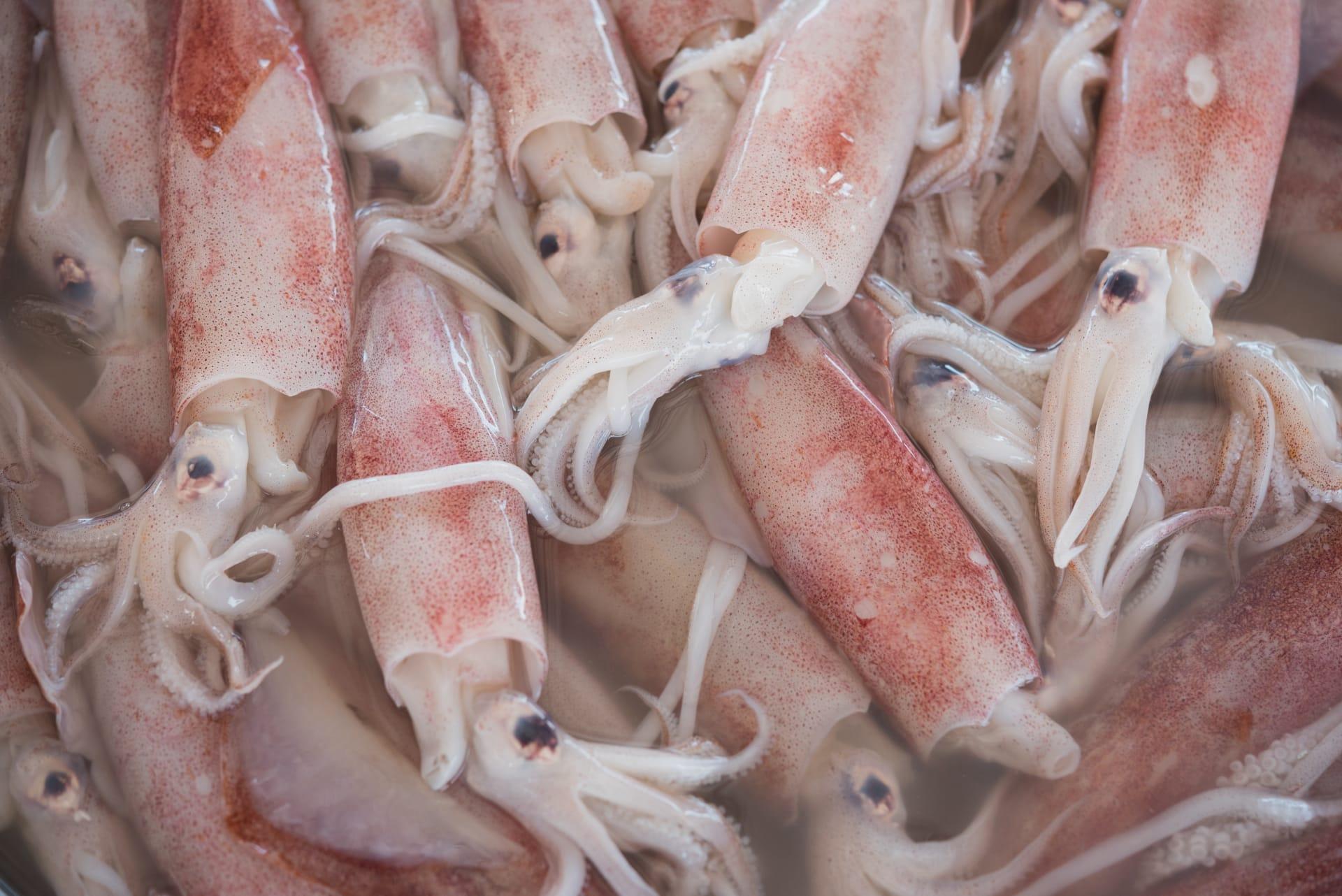1
Needle squids, with their elongated, slender bodies, stand out in the squid family, reaching lengths up to 40 centimeters. This unique body shape isn't just for show; it allows them to navigate through water with remarkable agility and speed, slicing through the ocean like a needle through fabric. Their streamlined form is an evolutionary adaptation, optimizing them for rapid, efficient swimming in the open ocean, where escaping predators and catching prey require bursts of speed.
These squids are not just fast swimmers; they are also equipped with a fascinating biological feature: bioluminescent organs. Located on their undersides, these light-emitting organs help the needle squid in multiple ways, from counter-illumination to camouflage against predators lurking below to communication with potential mates or conspecifics. By adjusting the intensity of their glow, they can blend in with the faint light filtering down from the surface, making them nearly invisible to predators and prey alike.

2
In terms of diet, needle squids are carnivorous predators, feasting on a diet rich in small fish, crustaceans, and other cephalopods. Their method of hunting is as intriguing as their physique. Equipped with sharp beaks and a powerful propulsion system, they can launch themselves at their prey with precision and speed. Once within reach, they use their tentacles, lined with suction cups and hooks, to grasp and pull the prey towards their beaks, ensuring a secure grip on their slippery meals.
Reproduction in needle squids is a fleeting but critical part of their lifecycle. After a whirlwind courtship and mating, females lay thousands of tiny eggs, which they attach to the seafloor or other substrates. These eggs are encased in a gelatinous substance that provides some protection from predators and the environment. The hatchlings are miniature versions of the adults and are left to fend for themselves from the moment they emerge, beginning the cycle of life anew in the vast ocean.

3
Needle squids have a remarkable adaptation for survival in the deep sea: their ability to change color and pattern rapidly. This is achieved through specialized skin cells called chromatophores, which can expand or contract to alter the squid's appearance. This camouflaging ability serves multiple purposes, from hiding from predators to signaling other squids for social or mating purposes. The speed and variety of these changes make them one of the most dynamic visual communicators in the ocean.
Another intriguing aspect of needle squids is their migratory behavior. They undertake significant seasonal migrations, driven by changes in ocean temperature and food availability. These migrations can span hundreds of kilometers, showcasing their endurance and the importance of environmental cues in their lifecycle. This nomadic lifestyle ensures that they are always in areas that optimize their chances for feeding and reproduction, demonstrating a remarkable adaptation to the ocean's vast and variable environment.

4
The sensory capabilities of needle squids are finely tuned to their pelagic lifestyle. Their large, complex eyes are among the most advanced in the animal kingdom, providing them with excellent vision even in the low light conditions of the deep sea. This visual acuity is crucial for detecting prey and predators from a distance, navigating through the ocean's depths, and communicating through visual signals. The importance of sight in their survival and interaction strategies cannot be overstated, making their eyes a focal point of evolutionary refinement.
Needle squids also play a significant role in their ecosystems as both predators and prey. They are a vital part of the marine food web, controlling populations of smaller marine organisms while also serving as a key food source for larger predators like sharks, marine mammals, and seabirds. This dual role highlights their importance in maintaining the balance and health of oceanic ecosystems, making them a crucial species for marine biologists and ecologists to study.

5
Despite their fascinating biology and ecological importance, needle squids face threats from overfishing and environmental changes. Their populations are vulnerable to fishing practices that target them both for human consumption and as bait for larger fish. The delicate balance of their marine habitats is also disrupted by climate change, which affects ocean temperatures, currents, and the availability of prey, posing long-term challenges to their survival.
Conservation efforts for needle squids are complex due to their wide distribution and migratory nature. Protecting them requires international cooperation and sustainable fishing practices, as well as ongoing research to understand their life history and habitat needs. Efforts to mitigate climate change and preserve marine biodiversity are also crucial in ensuring that future generations can continue to marvel at these remarkable creatures and the ecosystems they inhabit.